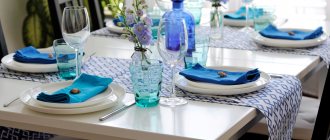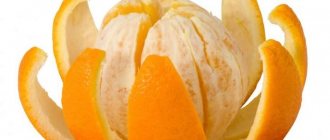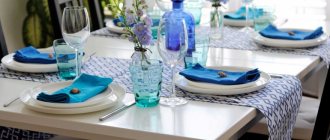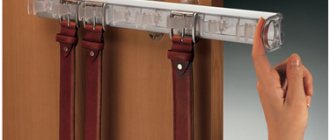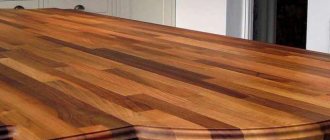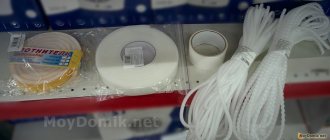A beautiful table setting is needed for any occasion. For each event, there are individual ideas for decorating the place where the meal will be held. When using various options, you need to act wisely, because one component that is placed incorrectly will ruin all the beauty.
Original table setting in blue and white motifs Source www.initial.com.ua
Table decoration with white plates for many people in New Year's style Source posudaguide.ru
An original approach to decorating a table for tea drinking and the arrival of guests Source modernplace.ru
Basic rules for table setting
The basic serving rules are quite simple.
- All cutlery must be perfectly clean. To achieve sparkling cleanliness, you need to wipe them with a damp, warm towel. Then wipe dry thoroughly.
- Make sure that there are no smudges on the cutlery or utensils.
- An important component of serving is the tablecloth. It must be perfectly ironed. You need to cover the table with it so that the edges lightly cover its legs. They should hang down by about 25-30 cm. The number of cutlery depends on the number of dishes that will be served at the table.
- Arrange items so that each guest can comfortably use them - choose the optimal distance. Appliances should be arranged the same way for each guest.
- Many people believe that table setting rules are limited to the correct arrangement of cutlery and dishes, but in fact they also include general recommendations for the appearance of the table and chairs and even the order in which dishes are served.
- Table setting begins with arranging chairs for each guest. The distance between chairs is 50-80 cm, each guest should be allocated equal space at the table.
- The table should not look overloaded. Only those plates, cutlery and glasses that are suitable for the specific serving of dishes should be placed on it.
- Serving is determined based on the dishes planned to be served, the number of guests, time of day and reason for the feast. Thus, a wedding table setting for a large number of guests will differ from a dinner in a country house with a narrow circle of friends.
- The table setting should correspond to the theme of the feast and be in harmony with the interior of the room.
- All serving items (tablecloth, dishes, napkins, plates and cutlery) should be combined with each other and look like a single whole.
- Over the decades, certain rules and regulations have been formed. By following them, you will get a festive table at which everyone will feel comfortable.
And a little about the arrangement of dishes
In addition to serving cutlery and dishes, you need to lay out the food dishes themselves. Here is a small reminder on how this can be done beautifully and correctly.
OK it's all over Now. We wish you successful practice and happy, heartfelt holidays!
Support the project - share the material with your friends on social networks:
Sequence of table setting
The table should be set according to the following plan:
- tablecloth;
- dishes;
- cutlery;
- glasses, wine glasses, glasses;
- napkins;
- table decoration.
The decor should match the theme of the event and create the appropriate mood. There is no need for too much decor, but each element should be combined with the other.
Don't forget the spices. Guests should be able to add them to their dishes according to their taste.
Cold appetizers are usually placed on the table last.
Table setting begins with laying out a tablecloth on the table. It would seem, what could be simpler? Throw the tablecloth over the table - and it's done. In fact, there are certain rules about this.
Firstly, the tablecloth must be perfectly ironed and have a presentable appearance. There is nothing good about setting the table with a crumpled tablecloth or oilcloth. The smoothed tablecloth, or rather its corners, should fall against the table legs, covering them evenly. There are also requirements for the descent of the tablecloth on all sides - at least 25 cm and, in no case, lower than the seat of the chair.
Such requirements were not introduced by chance, since a tablecloth on the table that is too small looks unsightly, and if it is too large, it causes inconvenience to guests. Once you've covered the table with a tablecloth, it's time to start arranging the plates.
A classic and win-win option is a snow-white tablecloth. She always looks elegant and solemn. However, there is no need to be afraid to experiment. It should be selected depending on the overall color palette of cutlery, the interior and the type of feast. Usually preference is given to light shades. But they can also be colored, plain or with a pattern. The pattern should be located along the edge, because excessive variegation can distract the attention of guests. If you prefer a dark-colored tablecloth, then the cutlery should be a light shade.
Plates for serving the festive table
Several types of plates are used to serve the table. Each of them is intended for a specific dish. It is not customary to place dishes on the table itself. To set them, a large flat serving plate is used. This item allows you to comply with the rules of etiquette, protect the table from stains, crumbs and contact with the hot surface of the dishes.
Dishes for serving soup, appetizers, side dishes and salads are placed on a stand plate. Each of the plates for table setting has its own shape and size. This helps to serve the dish correctly and enjoy its taste and appearance.
Utensils for serving everyday lunches and holiday dinners can vary greatly. It is important that separate plates are served for each type of dish, but the table does not look overloaded.
Types of plates
The purpose of most of the plates from the table above can be easily guessed by their name; however, there are also dishes that are not entirely obvious. A pie plate is used to serve croutons, pies or bread. The chill plate is used to serve various snack dishes, such as oysters, salads or stews. The menu plate, as you can easily guess from its shape, is used to serve several types of salads or side dishes at once. It is also used for serving fondue. Scrambled eggs are served in an egg plate, jam, preserves or honey are placed in a rosette, and a bowl is intended for serving fresh berries, jellies and fruit salads.
What kind of plates you place on the table on a holiday or weekday evening depends on the number of dishes served. Serving a two-course dinner requires one plate, and a four-course dinner requires different plates.
Naturally, the plates on your table should be perfectly clean and dry. It is advisable to polish them to a shine before serving.
According to the rules, a snack plate (see table above) is located opposite each chair. You shouldn’t put it on the very edge of the table, it doesn’t look very presentable! The pie plate is placed to the left of the diner, as you can see in the photo above.
Before you start placing the dishes on the table, you need to carefully straighten the tablecloth, removing the slightest folds from it, and only after that you can start setting the festive table. Plates should be placed in front of each guest's chair. Placing them on the very edge of the table is unacceptable. The optimal distance is 2 cm. To ensure that the work progresses quickly and you don’t have to use a ruler, you can adopt the waiters’ technique - they measure the distance from the edge of the table to the plate using two fingers (index and middle) clasped together.
Please note that all dishes must be from the same set. In the center of each place there is a lower plate, which serves as a stand for a plate with snacks and hot dishes and serves primarily for decorative purposes. It is located at a distance of 2 cm from the edge of the table.
A snack or soup plate is placed on top of it, depending on which dish you serve first. To the left of the snack plate, diagonally, place a small plate for bread and butter (also called a pie plate).
At each change of dishes, plates are replaced so that guests do not have to eat from plates that are dirty or not suitable for a particular type of dish. Any feast requires at least one change of plates, and sometimes three or four.
New Year decoration
When decorating the New Year's table, several colors are most often used:
- red;
- green;
- white;
- gold.
However, it is better not to mix them together; only three colors should always be the main ones. It is better to combine gold only with white, for example, white tablecloths, beige napkins, white dishes, several of which may have a gold or black border, the pattern can also be in the form of specks. Transparent wine glasses can also be complemented with gold ribbons, white candles can be placed in golden candlesticks. You can add greenery to the bouquets; branches of lingonberries or spruce will suit the atmosphere perfectly.
Decorations made from fir branches are especially popular when serving on winter days; the photo below shows an example of how best to do this. They can be placed on the table between dishes, you can use them to decorate candles, or create a wreath in which long white candles will be inserted, which can be lit closer to midnight.
New Year or Christmas, celebrated in a red and green theme, is a classic. Checkered napkins, red tablecloth, fir cones, striped candy canes, Santa socks and white candles. This design is considered one of the most stylish and is quite traditional in America, where the New Year can be called the main holiday. You can also create a more relaxed design by placing brightly colored decorations on a crisp white tablecloth.
New Year's table setting
Another stunning color combination, just more suitable for Russia: white, blue, silver. This is where you can again use glasses and napkins of different colors. You can place small Christmas decorations with silver glitter, such as deer or Christmas trees, on the table.
Arranging cutlery
Cutlery should be 10mm apart from each other and the plate. On the left is a fork, and on the right is a knife, like a spoon. The fork should be with its teeth facing up and the knife with the blade facing the plate. If there are more than three dishes on the menu, then you do not need to lay out all the cutlery; they should be taken out when needed. With the plate there should be a fork and a knife, after them for fish, then a knife and fork for various salads. A spoon can be placed instead of a fish fork.
To the right of the plate is a soup spoon, immediately behind it on the outer edge there is a fork and a knife for appetizers (meat), the last place is a tea or coffee spoon. Cutlery for the main course is placed immediately next to the plate, and the dessert spoon is located behind the plate. A small butter knife is placed on the pie plate. The devices must be polished using boiling water or special products until they shine. Some restaurants place a special napkin under the cutlery.
The main devices are divided into:
- Dining rooms.
They are used to eat soups and main courses. The set includes a knife 20–24 cm long, a fork and a spoon, which are 5-6 cm shorter than the knife. - Snack bars
. Designed for appetizers and cold dishes. Consists of a knife and fork. - Fish
. Set of slightly modified fork and knife. The fish knife is dull, in the form of a spatula. The fish fork has shortened tines. - Dessert
. A trident fork 18-19 cm long, a small spoon and a knife with a narrow blade. Served with pies, mousses, puddings and other desserts. The dessert spoon can also be served with fried eggs and creamed berries. - Fruity
. These include a two-pronged fork and a knife. They are used for fruit salads, melons, watermelons and unpeeled fruit desserts.
In addition, special utensils designed for specific dishes can be served (for example, a fork for oysters, sprat or lobster).
Have a few appliances on hand in case one of your guests needs a new one. Appliances are usually placed in accordance with the serving of dishes. If you are planning several dishes, next to the serving plate and a little higher, lay out all the forks, knives, spoons that may be needed during the meal in the following order:
Forks are placed on the left and knives on the right of the plate.
On right
- the far right is a bread knife,
- the next one is a knife for fish or first course,
- then a meat cleaver.
Left
- closer to the plate is the fork for the main course,
- fish fork,
- on the outside there is a snack fork.
The last item on the plate is the one you need first.
Serving tips
Finally, I would like to note some rules that have a certain meaning in serving:
- If the meal is not finished, the cutlery is arranged in the following way: the handles are placed on the table, and the ends rest on the serving plate.
- If there is a need to leave the table, and the process is not yet completed, then the cutlery is placed crosswise on top of the plate in this way: the fork’s tines point to the left, and the tip of the knife to the right.
- In the case when the meal is finished and are ready for the next dish, the knife and fork are placed parallel to each other slightly to the right, approximately in the position of the clock hand on the numbers 4 and 5.
- If you are finished with the soup, then place the spoon in the serving plate, which symbolizes your readiness to consume the next dish.
- A napkin on a chair indicates that the guest has left for a while, and if it is left to the left of the plate, then the meal is over.
6 ways to fold paper napkins (1 video)
Interesting examples (88 photos)
img width=”800″ height=”445″ src=”https://kuhnidizayn.ru/imode3/idei_servirovki_stola_v_domashnih_usloviyah_varianti_na_raznie_sluchai_88_foto_101.jpg” alt=”Table setting ideas at home: options for different occasions | +88 photos” title=”Table setting ideas at home: options for different occasions | +88 photos» />Tableware
Today you can find a lot of different table setting schemes that will help you easily organize a gala evening without resorting to the help of specialists.
Banquet serving is a one-time arrangement of plates, cutlery and decorative elements.
If you choose the wrong dishes, you can ruin a gala dinner on the occasion of an event or an important business lunch. According to etiquette, certain napkins and glasses must be used.
Glasses
The classic is two glasses: for wine and champagne. The remaining varieties for alcoholic beverages are agreed upon in advance; if necessary, glassware for strong alcohol (shot glasses, glasses for whiskey, liqueur) is added. Glasses are arranged in this order: for red wine, for white wine, for champagne, and then glassware for strong alcohol in the order in which it is served. In addition, there is a separate glass (wine glass) for drinking water or juice; it is placed on the left. Each glass is unique, revealing the aroma and taste of the drink. All glasses are placed from largest to smallest.
In classic table setting, drink glasses are placed to the right of the plate. “Glass” is placed after “iron,” that is, after forks, spoons, and knives. All glasses, glasses, wine glasses are placed along the right circular fragment or along the right diagonal line from and above the main large plate. If there are more than 3 glasses, they are served in two rows. In front is a glass or shot glass for strong alcohol, a glass for red wine and a glass for water. Behind is a white wine glass and a champagne glass.
Before the exhibition, all glasses are rubbed with a clean towel. To avoid fingerprints, glasses are taken by the stem or bottom.
There is no need to install everything at once. Glasses are changed during the feast, as are plates. But a glass of water should always be on the table.
Plates with even slices of bread are placed in different parts of the table so that all guests can easily reach it. Bread taken from the common plates is placed on the bread plates, which are located to the left of the stand plates.
Salt shakers and other spice utensils are placed at the rate of one instrument for three to four people.
Various cold appetizers on dishes and plates are evenly placed on the table so that it is easy for guests to get them.
Serving items are divided into:
- individual (used by one guest);
- auxiliary (everyone uses);
- decorative (serve to decorate a meal).
- One individual serving set is:
- a plate called a large serving plate, or a large shallow plate, or a sub-plate, or a stand plate;
- plates and cutlery in accordance with the menu;
- glass/crystal for alcohol, mineral water, juices, etc.;
- napkin.
- Individual dessert set:
- dish for sweets,
- coffee or tea pair,
- dessert cutlery.
There are as many identical individual sets as there are guests invited. It is recommended to set the table with identical cutlery and dishes of the same style and color.
Cold appetizers on dishes and plates are evenly placed on the table so that they are within reach of each guest.
Depending on the number of people sitting at the table, plates with slices of black and white bread are placed in different parts of the table, arranging them so that the bread is within reach of each of those present. The taken slice must be placed on special bread plates, which are located to the left of the serving plates. To prevent the bread from drying out, it is sliced before serving.
If you are going to treat your guests to dishes that they eat with their hands, then finger rinses will come in handy. Small bowls made of ceramics, porcelain, glass or metal (silver or cupronickel) are suitable for this purpose. Rinse bowls with warm water and floating lemon slices - to effectively remove fat from fingertips - are placed to the left of the main plates, behind the forks. Depending on what dishes and in what quantities will be served, appropriate cutlery is used.
All tableware for a festive table setting should belong to one set. It is unacceptable for dishes and cutlery on the table to be of different colors and sizes.
Plates and cutlery are laid out in accordance with the serving of dishes. All alcohol is served on the table in pre-opened containers. But there is one exception: champagne should be opened just before serving.
Each participant in the feast should have one cloth napkin and several paper napkins.
You can use a large number of options for setting the table with dishes. But it should be understood that serving is a creative process, and not a strict set of clear rules. Therefore, when preparing a festive table, you need to comply with general requirements, but at the same time it is quite acceptable to introduce your own ideas.
Table etiquette or how to properly set the table
If you are invited to a dinner party for the first time, the number of cutlery and their order can be confusing. A well-organized festive dinner means proper placement of cutlery on the table, adherence to table etiquette and decoration appropriate for the event. To learn how to use cutlery correctly, you need to understand a few points.
Rule No. 1: forks, spoons, knives are placed in the order in which dishes are served (appetizers, soup, meat or fish, fruit, dessert). Each item on the table plays its role.
General rules for table setting suggest the following tableware arrangement patterns:
- a snack plate is placed in front of the guest;
- on the left is a cake plate or paper napkin with additional cutlery;
- on the right are knives and spoons, and on the left are forks;
- Wine glasses and glasses, as well as dessert cutlery, are placed in front of the main plate;
- There is a napkin on the appetizer plate.
Rule No. 2: serving items should be used for their intended purpose. The utensils located on the right side are taken and held while eating in the right hand, and those located on the left - with the left hand.
The question of how to use a knife deserves special attention. It is necessary that the end of the handle rests in the palm of the right hand, the thumb and middle fingers clasp the base of the knife from the side, and the index finger lies on the surface of the handle. This will make it more convenient for you to cut off the desired piece of meat or fish, and you won’t have to blush in front of strangers.
Rule No. 3: table decoration involves the use of all kinds of decorative elements: a white ironed tablecloth, lace napkins, colorful runners and fragrant flowers.
To better understand the principle of table etiquette, we recommend that you familiarize yourself with the video material presented below. You will learn a lot of useful things and will forever forget about the problem of improper use of cutlery.
On video: serving and serving rules.
Etiquette rules for serving and using napkins
To make everything look harmonious, the standard table setting should be supplemented with details. So, napkins are an important element. At a special event, they must be fabric, made of cotton or linen. A creative approach to decoration will help set the color scheme, the mood of the celebration, and also make accents. To truly surprise guests with an original and interesting table setting, you can include an unusual folding of napkins.
- Color spectrum. Modern table design requires adherence to a common color line. The tablecloth, dishes, and desserts should resonate with each other not only in their overall theme, but also in tone.
- Thickness and material. There are two options: paper and fabric. Which one to choose depends on the type and style of the event.
- Preparation. Before choosing patterns and beautifully folding paper napkins in their original form on the festive table, make sure that the selected shapes correspond to the rigidity of the napkin, and the composition will keep its shape.
- Functionality. The napkin should unfold easily and quickly, despite the complexity of the intended design.
- Accessories. For serving, you can use special forms, rings and holders.
After all the guests have taken their places, the napkin is unrolled and placed on the lap.
Napkins are not only auxiliary decoration elements, but also a necessary hygiene product.
If you need to dry your hands, you can do this by using the top edge, lifting it up a little. Before taking a sip from a glass, you should blot your lips. The accessory remains on your lap until the end of the meal. After the celebration is over, it must be folded to the right of the plate.
How to beautifully fold napkins on a holiday table
Basic Rules:
- Choose the shape of napkins based on the festive occasion, as well as the age of the guests.
- It is worth noting that you should not make intricate and overly complex figures. Everything should be as simple as possible so that guests don’t waste extra effort trying to unwrap another napkin.
- Pay attention to the shade. You should select napkins based on the color of the tablecloth, as well as the items with which your table is set. You can create a single holistic stylish composition.
- As for the placement of such decor, it can be in completely different places. You can place the napkin on a plate or put it in a glass or napkin holder. This is where the addition option will follow.
- Before folding the products, they must first be prepared. You need to practice in advance to get the hang of it and so that this activity doesn’t take up all your free time.
- You should start training with the simplest additions. For example, you can simply roll napkins into a tube, make an accordion, or add color accents.
Classic fan in stand
A quick and convenient option for placing paper napkins on the table: a fan on a stand. For serving, you will need a stand in which the napkins must be folded into triangles, imitating a fan.
They should match the color of the tablecloth or be contrasting with it.
One pocket
An easy and at the same time elegant type of folding. You can insert a decorative element into the pocket based on the theme of the celebration, such as a twig or flower, or cutlery.
- Fold the fabric in half from bottom to top.
- Fold the first layer in half, aligning the top and bottom corners.
- Turn it over.
- Turn right to left.
- Once again, fold in half from right to left.
- Tie with braid.
- Add a decorative element or cutlery.
French envelope
Suitable for classic serving, the French envelope is distinguished by the presence of three pockets. How to fold
- Fold the square twice: from bottom to top and from left to right.
- Fold the upper right corner of the first layer of fabric diagonally down towards the lower left.
- Repeat with the second and third layers. Keep the distance between them, it should be the same.
- Turn the fabric over.
- Fold the left side towards the center and then the right side.
Rhombus
This is also one of the basic serving techniques. To make the canvas look impressive, it is better to starch it in advance. How to fold
- Fold the fabric in half from bottom to top and then from left to right.
- Turn the resulting square over so that the corner with the folds is at the bottom.
- Fold back the first layer of fabric, but not the second and third ones completely.
- Carefully fold the left corner towards the center and the right corner over it.
Lily
This option is suitable for both formal receptions and dinner with loved ones. It looks really royal, although in reality the lily is not difficult to make. How to fold
- Fold the fabric in half.
- Fold the top corners toward the center to form a triangle.
- Connect the side corners with the top - you get a rhombus.
- Bend the corners to the sides - these are the petals of the flower. Correct its core.
- You can thread the finished product into a napkin ring.
Devices inside
A non-standard option for serving cutlery is to wrap it inside a napkin. How to fold
- Roll the textile from bottom to top.
- Place the appliances at the bottom center of the triangle.
- Fold the corners and wrap the cutlery.
- Secure the top with a sticker or tie it with braid.
Quick triangle
If you’re short on time and want to decorate your table, pay attention to a simple and quick way to decorate textiles. By the way, this option looks good with a ring. How to fold
- Fold the fabric to form an isosceles triangle.
- Fold the right side over and attach it to the bottom side of the triangle.
- Bend the right side again.
- Pay attention to the width of the resulting parts. Correct, if they are approximately the same.
Envelope
An original way to leave a note or lay out place cards is to place them inside a scarf. A symbolic envelope is perfect for this. How to fold
- Fold the left and right corners of the square towards the center.
- Also pick up the bottom one and tuck it inside.
- Roll up the structure, leaving only a small part of the top.
